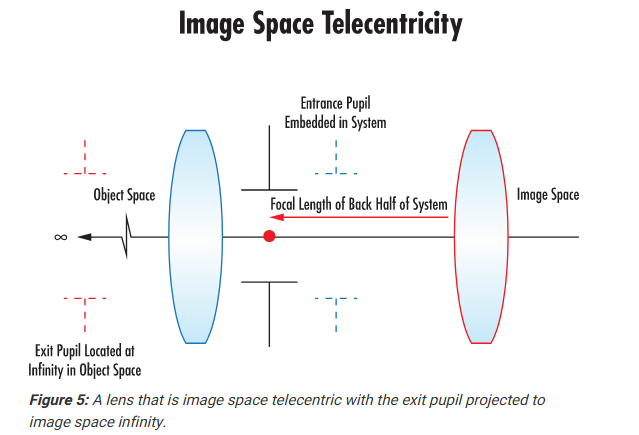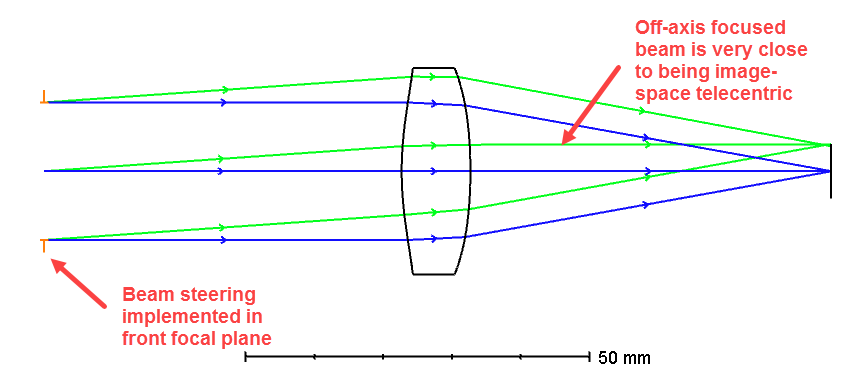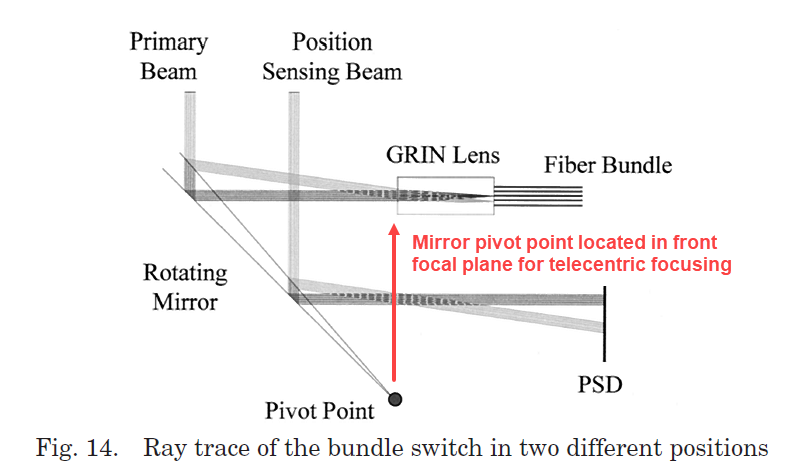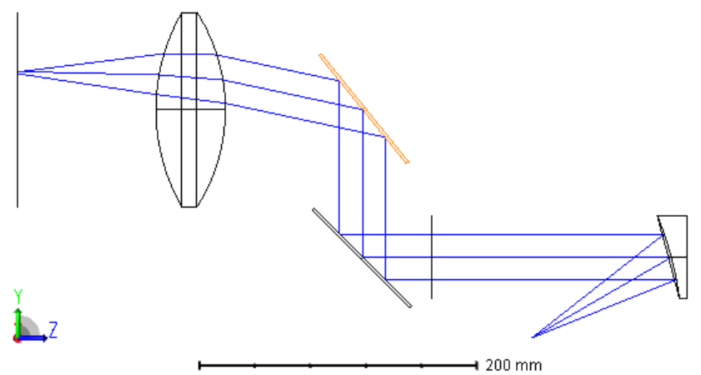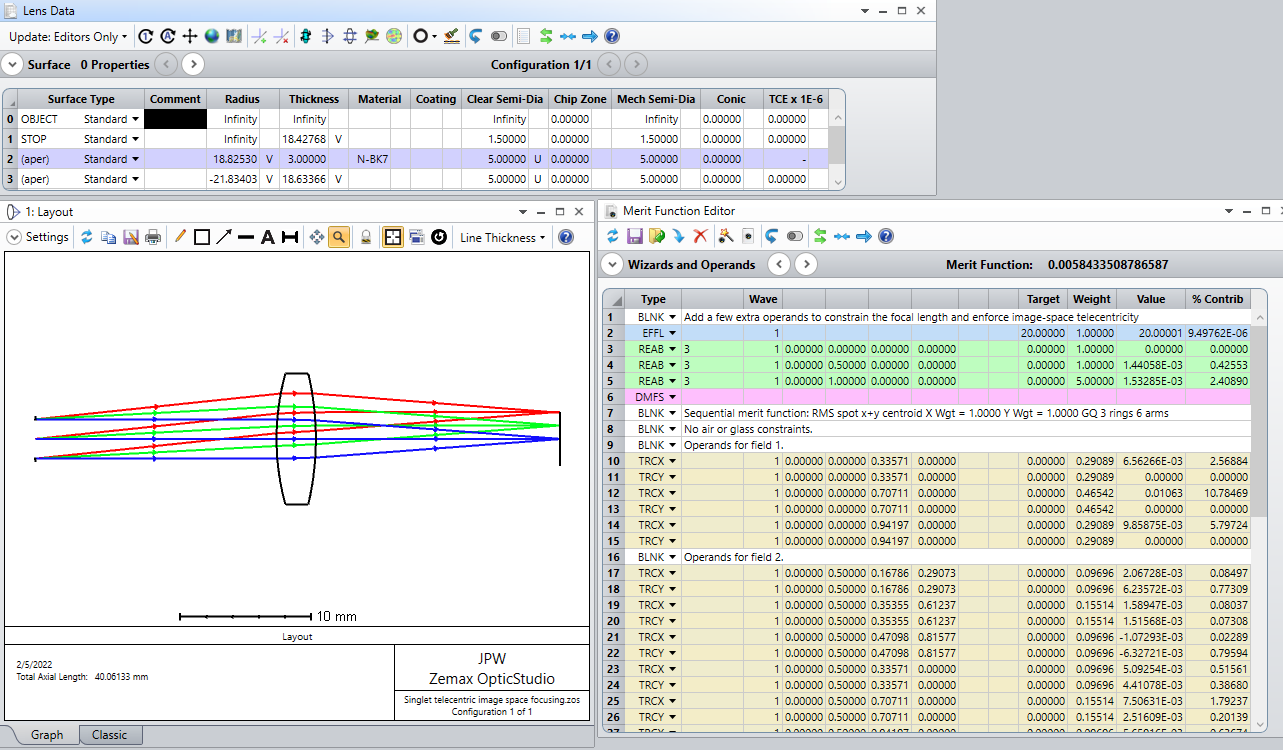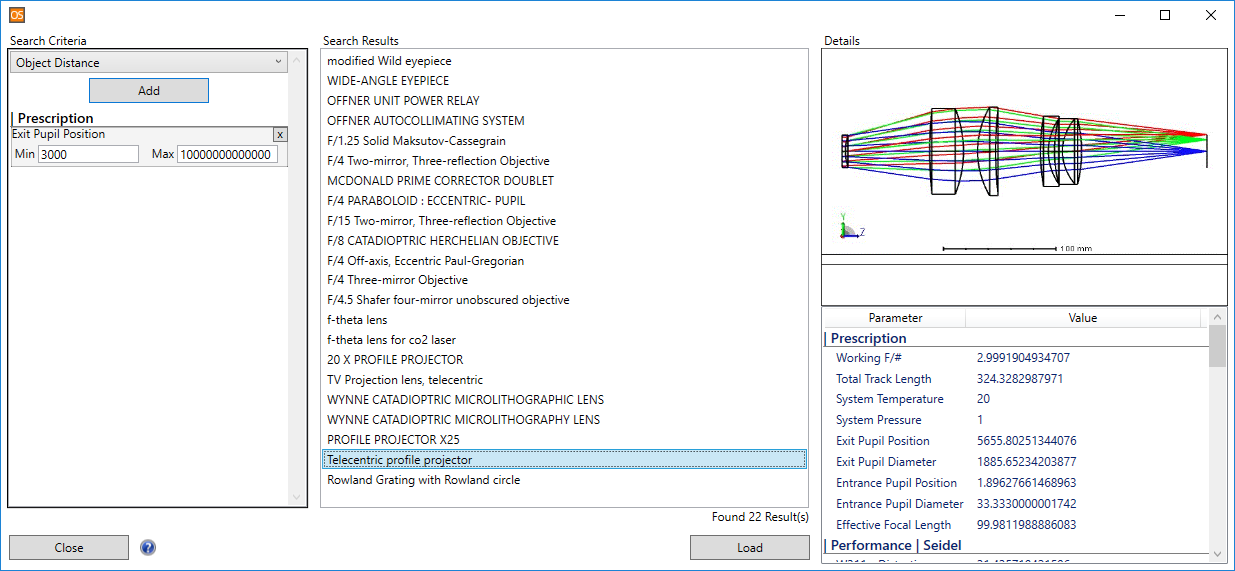Hello,
I am trying to implement a THz imaging system. My feed is a THz gaussian source (typically in the range of 500 GHz), which is collimated using an Off-Axis Parabolic (OAP) reflector. Then, in order to have scanning of the imaging system in XY plane, I have two scanning mirrors which rotate in X and Y planes. (A better visualization is in the figure below).
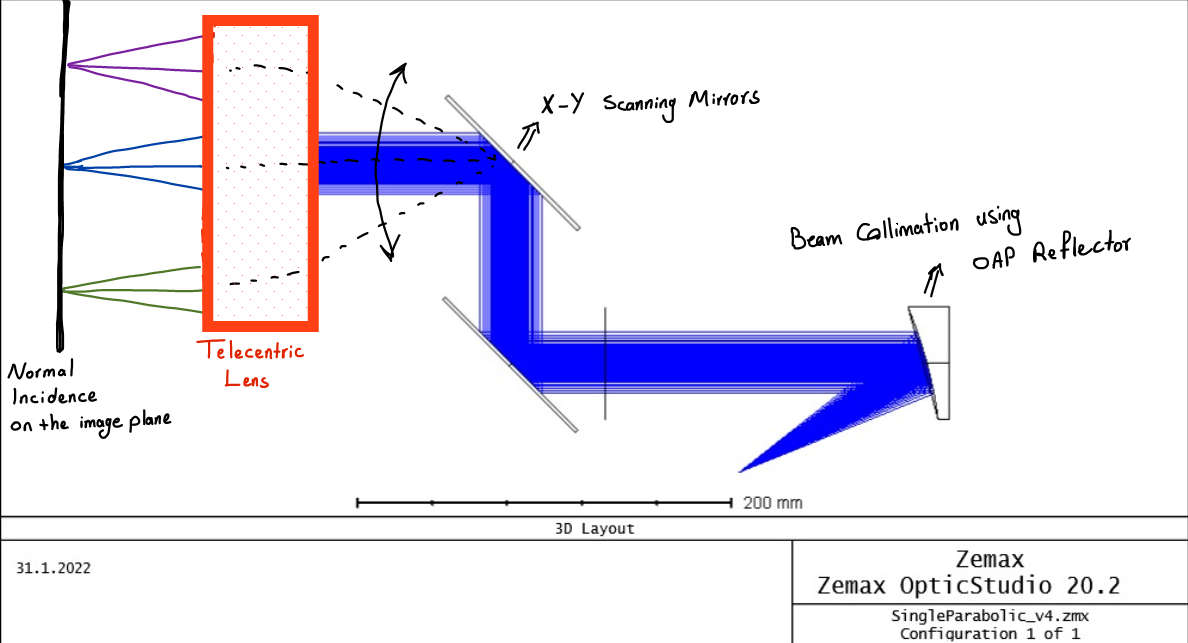
At the final stage of the imaging system, in order to focus the collimated beam and also have a normal incidence on the image plane, I need to use a lens that is telecentric in the image space.
Could you please help me on how to use such a telecentric lens? Since I am planning to implement this setup experimentally, as well, I need it to consist of as few seperate lenses as possible.
If you could send me a zemax file to use such a telecentric lens on a THz collimated beam, or if you could modify the zmx file that I have attached to this post, I would really appreciate it!
Thank you very much for your time, in advance!
Sincerely,
Pouyan Rezapoor



